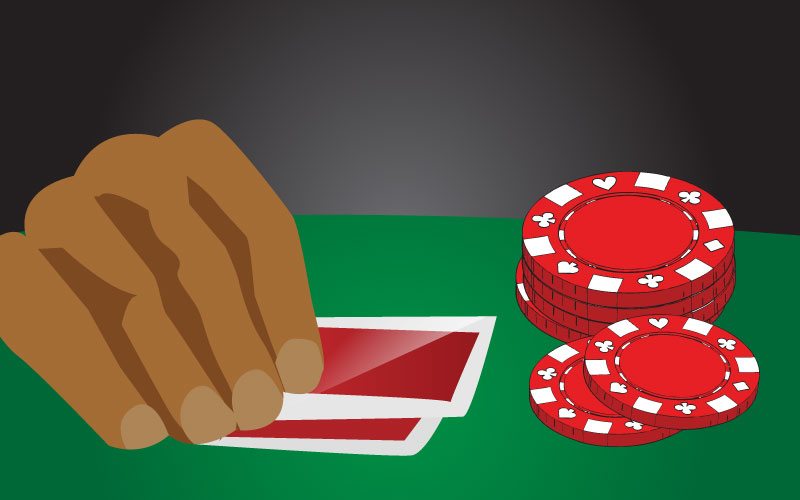4) The Small Broadways (KT; QJ-QT; JT)
The first thing to note with all of these hands is that suitedness really increases their playability. All of these hands are good hands to play in multi-way pots because they can win occasionally just by hitting top pair; they also will often win because they have the ability to make excellent two-pair hands and straights. As I said earlier, when they are suited they increase because when you hit a flush you will almost always have the best hand.
Most players limp these hands from every position. I don’t particularly have a problem with that strategy. However, in general I tend to raise all these hands if they are suited from MP on, and will sometimes openlimp them from EP and sometimes raise them depending on the players at the table.
When these hands are offsuit, I just open-fold them from EP, and will just call behind from late position.
Against a raise, these hands should almost always be folded. The only time to do different would be if you had position and wanted to 3-bet a loose aggressive player; or if you were in late position and you were assured the pot was going to be at least 4 or more players – in which case you could join the cold-calling party.
5) The Small Pairs (66-22)
Small pairs should be the easiest hands to play in limit poker, but invariably they are the hands that are misplayed the most often. There are two options we want with small pairs: 1) to get the hand heads-up or 2) to get the hand with a ton of players and hope to hit our set. Where limit players often make huge mistakes is that they see a pair and decide that now is the time to raise preflop even though they are in MP and have already seen 3 limpers and at least 2 other players are sure to join in on the pot now that you have bloated it; they then compound the error by chasing their miserable 2 outs postflop in pots where they have little to no chance of winning.
To avoid this mistake you need to understand that small pairs value comes almost exclusively in hitting a set. You will only do this about 1 in 8 times when you have a pair. This means a vast majority of the time you need to be prepared to get rid of your hand postflop.
At your standard, loose-passive game, I suggest limping these hands from every position. The only time I would tell you to do anything different would be if you were in the HJ, CO or button and it folded to you. Then, and only then, would I suggest that you raise your small pair. The reason we would raise then is that we would expect to either get the blinds to fold (it does sometimes happen) or get the hand heads-up and we would have position.
When facing a raise with small pairs we again want to ensure that there will be at least 4 players to the flop. In which case we can profitably cold-call. Otherwise, just fold them.
6) Everything Else (Suited As, Small Suited Connectors, other random hands)
I am actually not going to go into great detail into all the other hands that you can play. I would urge you once again to get pokerstove and use it. Find out what hands play well against certain ranges and what hands do not. Discover for yourself that hands like A4s play marginally well against 4 other players with wide ranges. Discover that hands like T9o which you thought were playable because they are connected are actually marginal losers against these same 4 wide ranges and thus should be folded preflop in almost every situation. Discover that when T9 becomes suited it then becomes marginally profitable and should be played.
In other words, get pokerstove and use it. Any hand that has an equity advantage preflop against your opponents ranges should be played. Any hand that has an equity disadvantage should be folded. The biggest leak most limit players have is simply that they play too many hands. Hopefully pokerstove will teach you that many of the hands you think are playable, are actually losers. It also might show some of you that some of the hands you think are bad hands might be better than you think.
In my next post, I will talk about how you should play your blinds and then just some last general concepts about preflop play.
Submit your review | |








